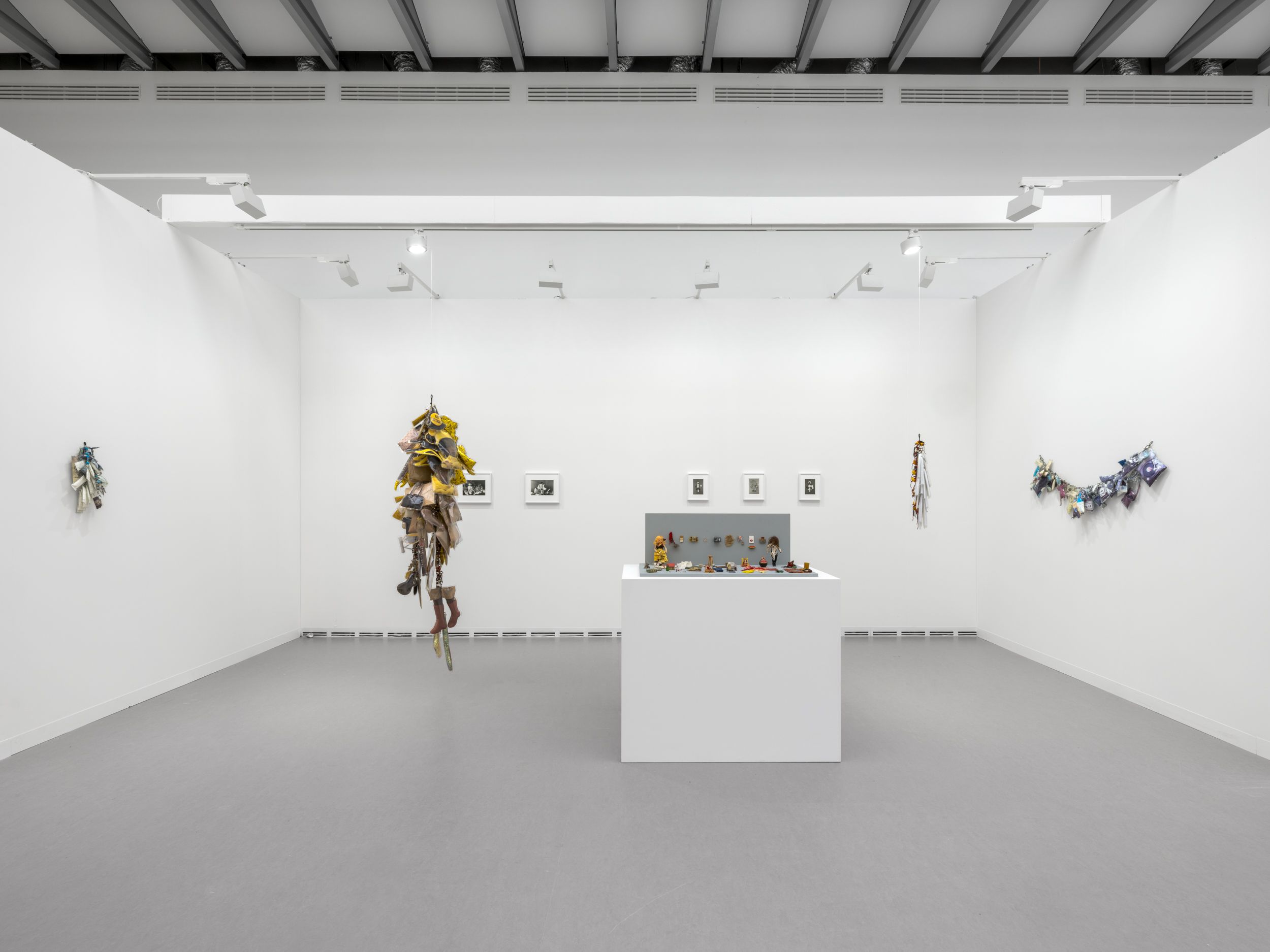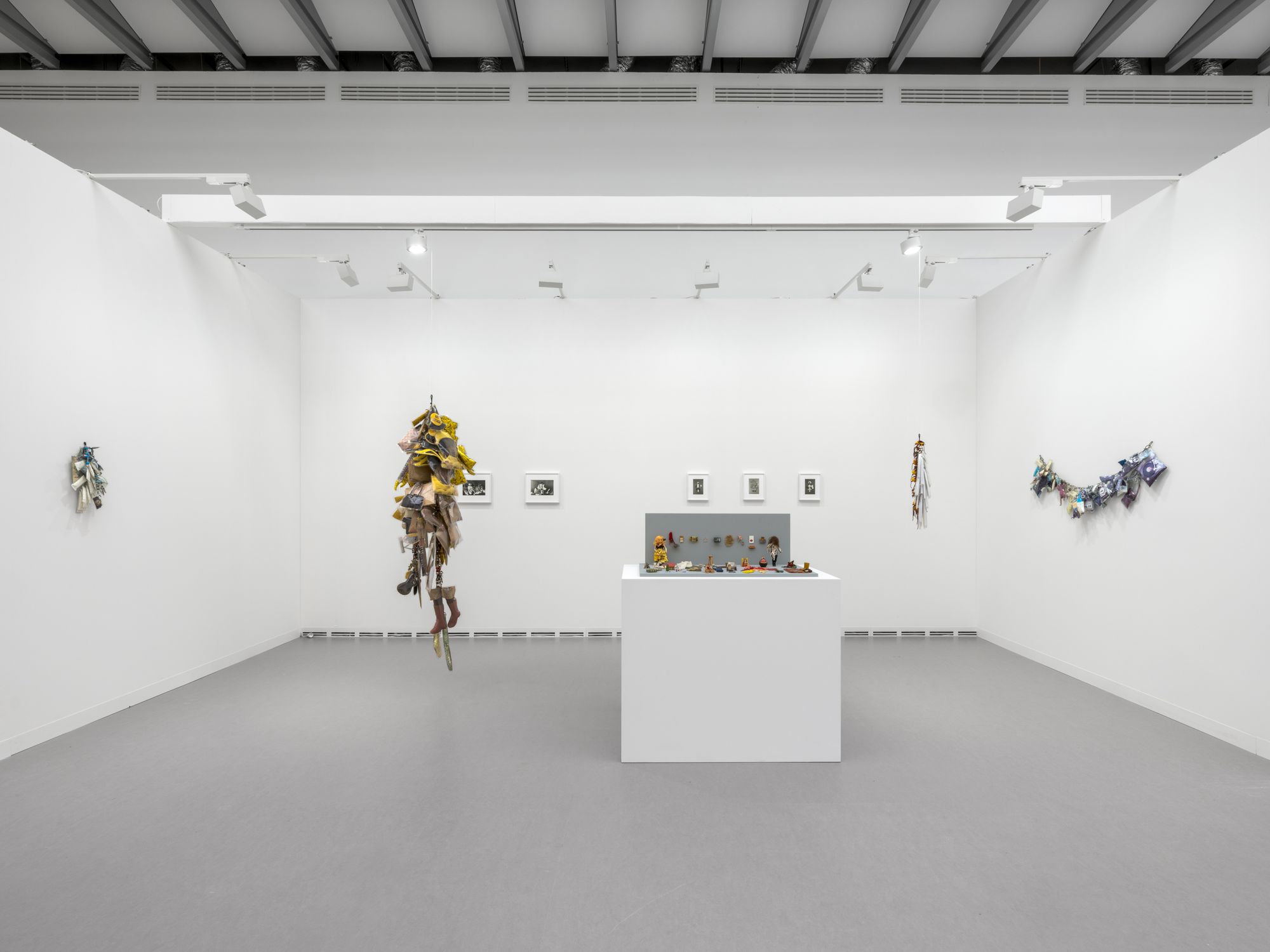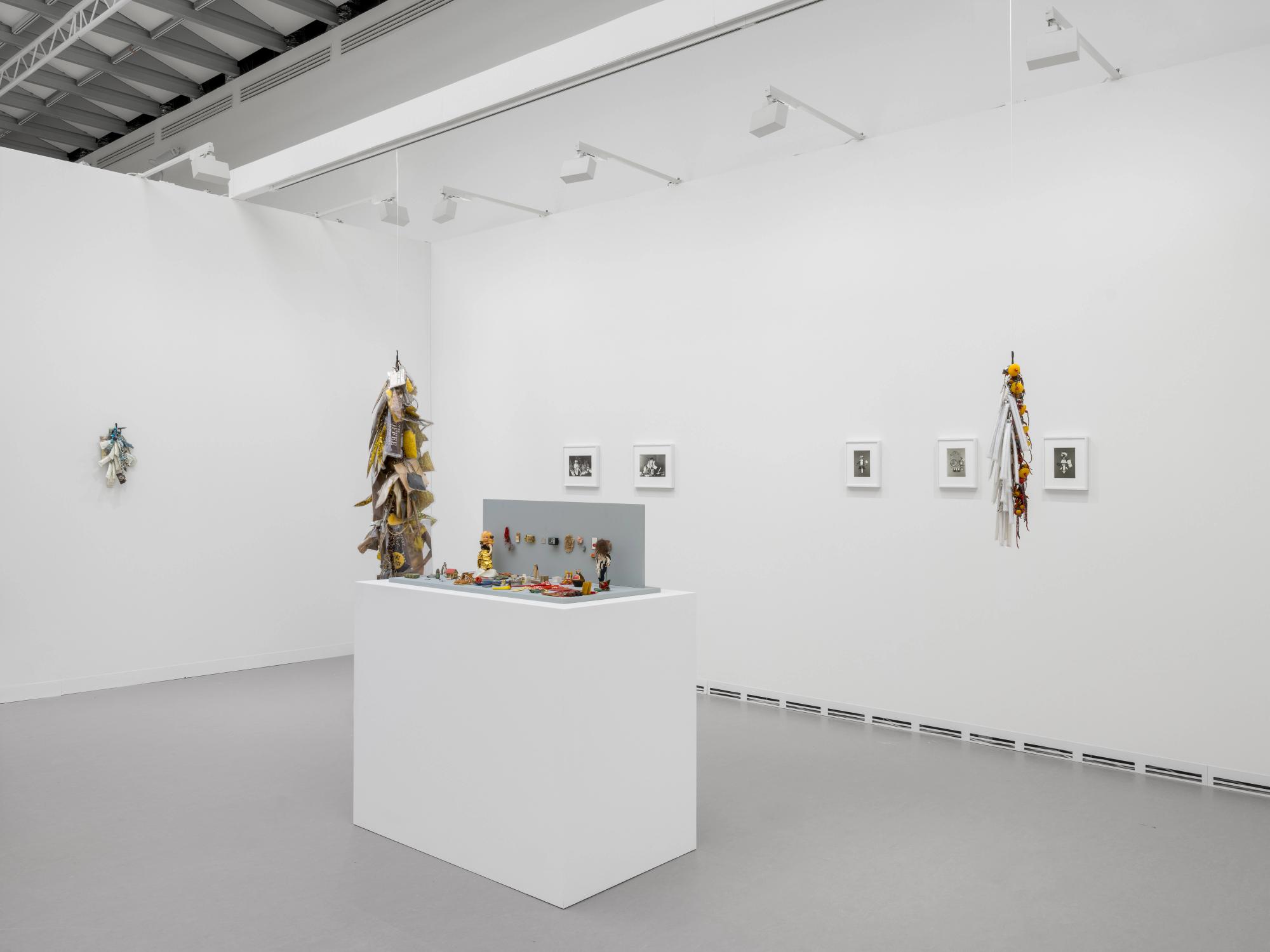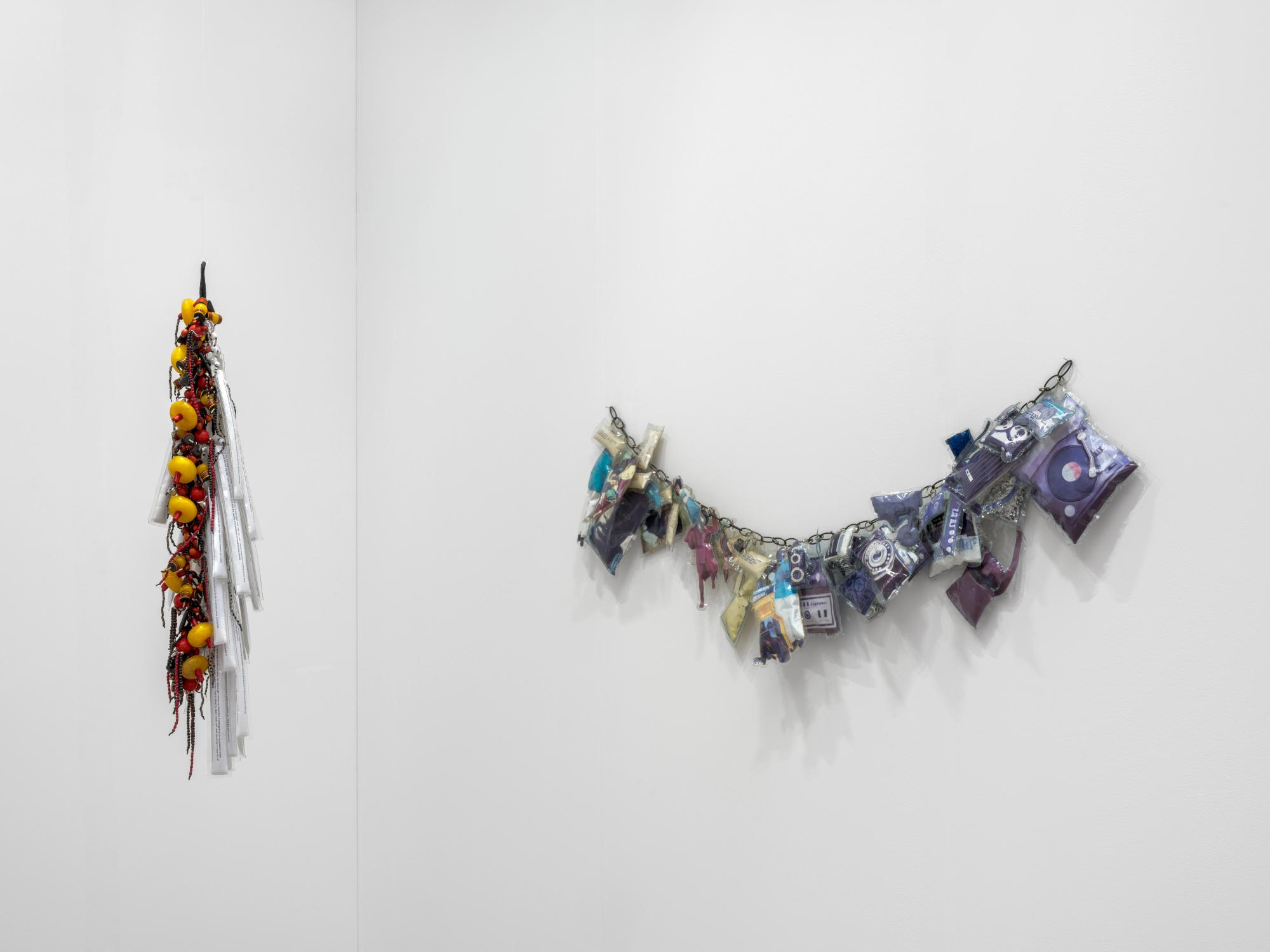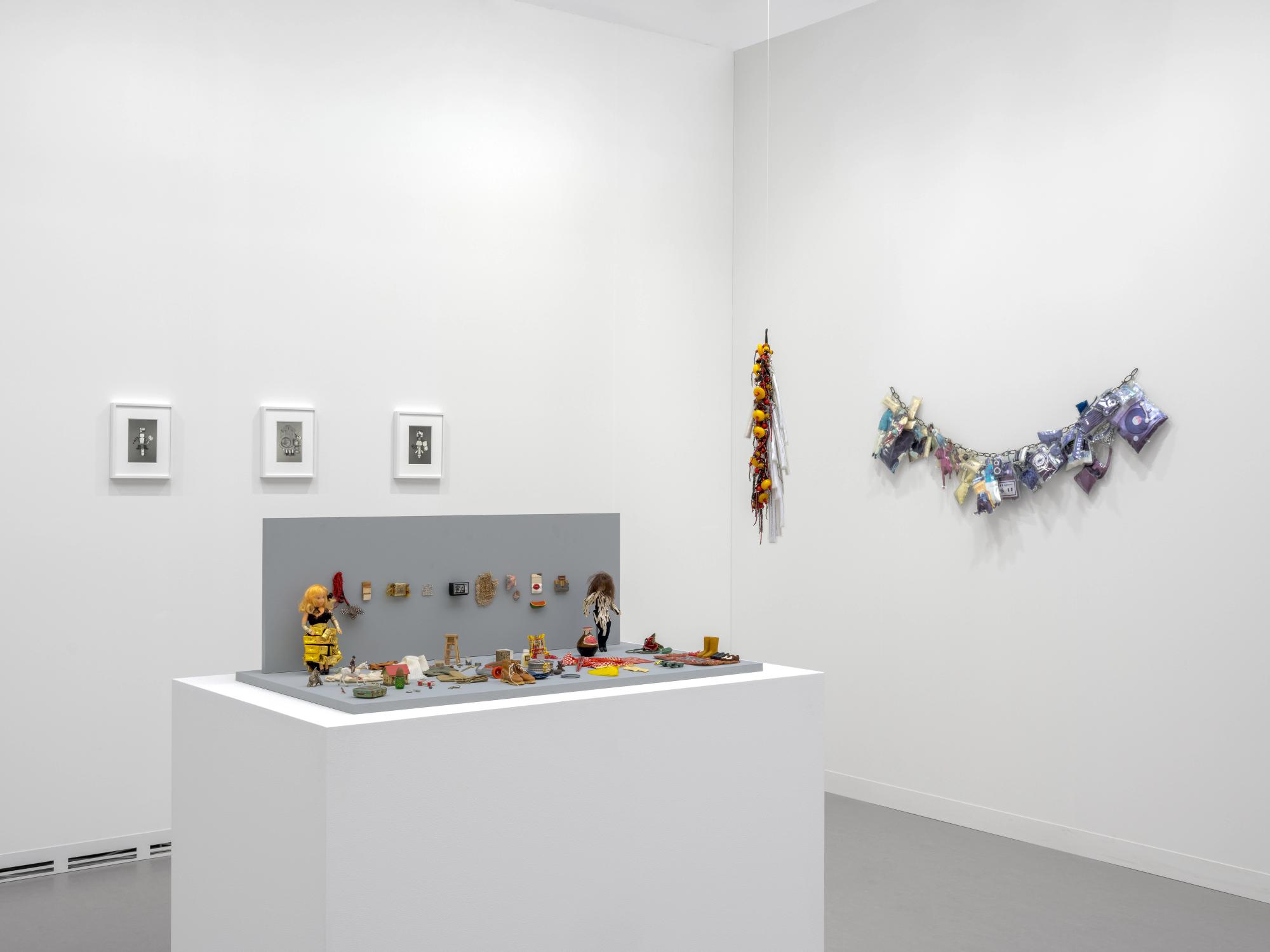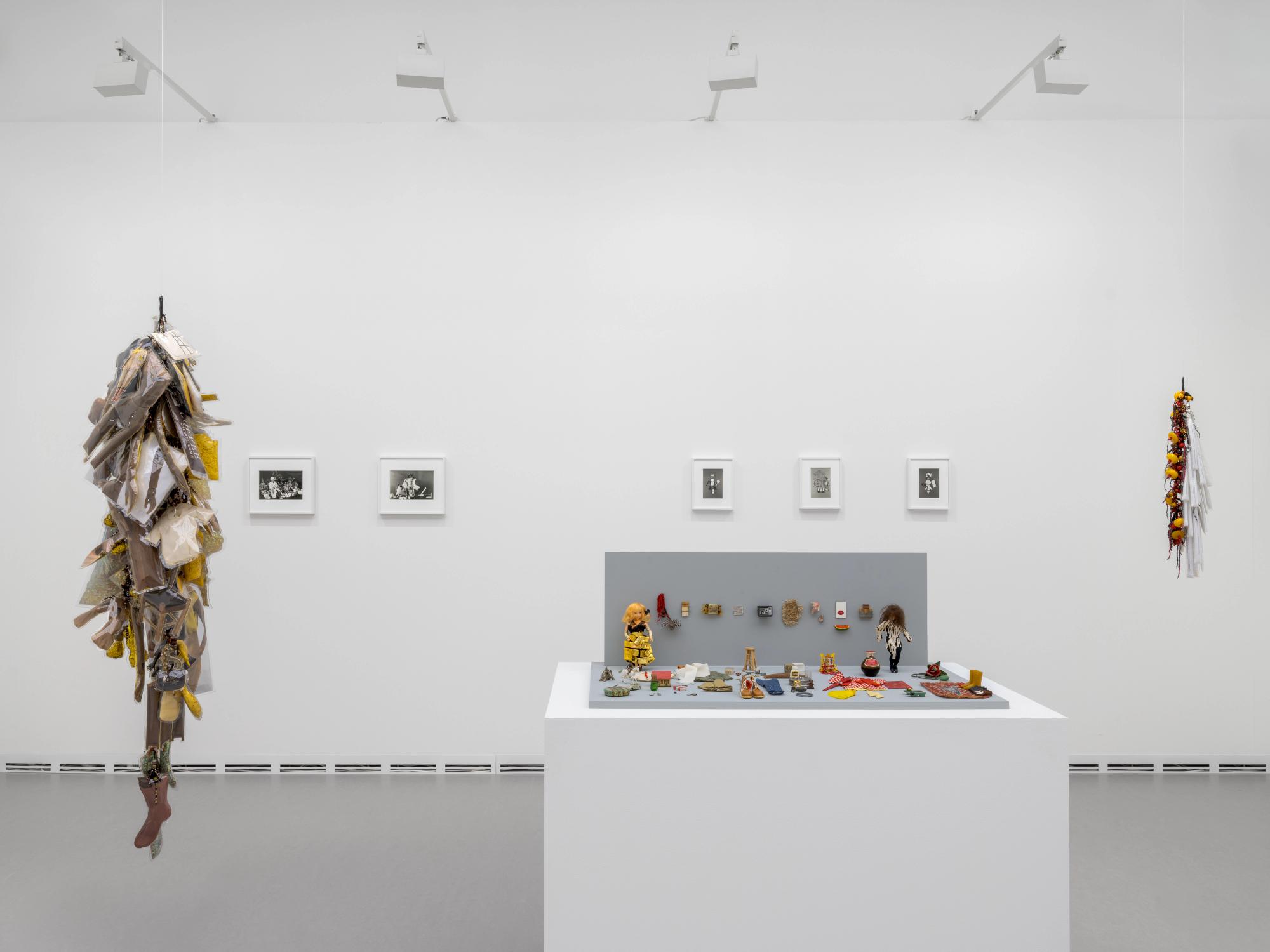Janet Olivia Henry
Art Basel Paris: Janet Olivia Henry
Oct. 22–Oct. 26, 2025
Gordon Robichaux, New York, and STARS gallery, Los Angeles, are pleased to present a solo presentation by the trailblazing African American artist, Janet Olivia Henry (b. 1947; East Harlem, New York). Combining her iconic miniature dioramas with photographic scenographies, and her hanging soft sculpture series, Lariats, this presentation highlights the artist’s expansive and multidisciplinary fifty-years-long practice anchored in explorations of storytelling and play as liberatory practices and addressing issues of gender, race, and class in American society.
Since the late 1970s, Henry has combined an ambitious artistic practice with her lifelong work as an arts educator, activist, and significant contributor both to Linda Goode Bryant’s groundbreaking gallery, Just Above Midtown (JAM), showcasing the experimental work of Black artists, and the feminist alliance Women’s Action Coalition (WAC).
Henry’s multidisciplinary practice anchors in an exploration of storytelling and play as liberatory practices to address gender, race, and class. For fifty years, she has developed fictional characters and narratives using dolls, miniatures, and a wide range of processes, including photography, beading, quilting, and her own writing. Throughout, she has returned to the diorama as a key form, producing installations featuring miniature representations of experiences from her life, the art world and from memorable encounters with artist peers, that double as mini-dramas. The Male Art Dependent (1981/2025) uniquely combines found and altered dolls and miniatures in a tongue-in-cheek critique of the gallery-dealer system. In the scene, an art exhibition hangs above a taxonomy of objects—clothing and personal effects—that constitute the art dealer’s life and persona. The exhibition features miniature artworks that Henry carefully produced as an homage to works of her seminal peers, including David Hammons and Howardena Pindell, flanked by two dolls referencing performances by Senga Nengudi and Lorraine O’Grady.
Henry’s revision of the diorama—typically employed in historical museum displays reinforcing dominant narratives—not only shifts the scale from full or life-size to minor or miniature but also points to an economy of production unique to her process. A series of silver gelatin prints from the 1980s displaying staged tableaux of objects used in her narrative scenes shows how Henry’s art-making is deeply connected to her collection and archiving of material culture. Alongside her dioramas and photographs, Henry also writes stories and dialogue for the characters, which she methodically catalogs in binders. She uses these multidisciplinary practices to develop characters, like “Christian Cullid Lady” or “White Protestant Male”—that she refers to as “examinations of archetypes.”
Developed out of a pivotal residency at the Studio Museum in Harlem in 1983, Neggerotti Melodrama, for instance, points to the fissures operative in the art world along the lines of class. “There were people in and around the institution who were ‘relentlessly upwardly mobile'... disinterested in those outside the building on 124th Street,” she writes. “But these ‘culturati’ were also doing vital work to reconstitute the Studio Museum as an important Black cultural institution… Neggerotti Melodrama is my observation and experience of class and skin color bias and the way some people removed themselves from the less-than-salutary parts of the Black community.”
Neggerotti Melodrama: Claude (1980s) exemplifies these contradictions: Claude is a “nice middle-class Black man who is an I.N.—an important negro in his circle.” But the work is also exemplary of the series of soft sculptures, or Lariats, that form another pillar of her practice. These assemblages combine printed excerpts from her writing and photographic enlargements of images of dolls and accoutrements. The text and images are sewn into clear vinyl, stuffed with batting, and strung together on knotted cord punctuated with clusters of charms and beads to create talismans. In two more recent lariats, RITUAL (Self-Portrait) (2025) and DUPLICATE (VARIATION) (2024), Henry reorients the sculptures vertically: in the former, Henry expands the size of the sculpture to near-anthropomorphic scale, and incorporates photographs of dolls and objects from her iconic Ritual series to create a self-portrait. In the latter, Henry combines text and a dense cluster of braided beads in a syncretic arrangement that bears witness to her narratives and material sources.
